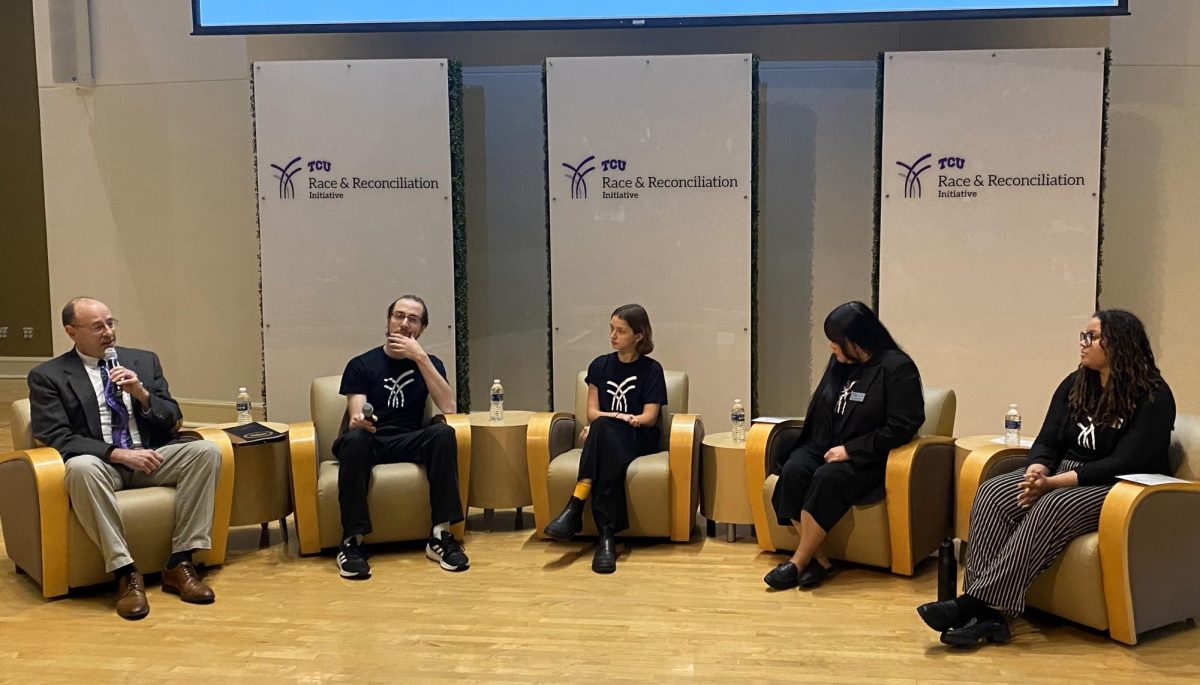Here I am, a 20-year-old college junior, trying to make ends meet and kindergartners have opportunities I never had.Every day in kindergarten classrooms across the country, iPods are being utilized to teach 5-year-olds phonics and vocabulary.
What? I remember when kindergarten meant learning the ABCs, nap time and eating paste. Are those days beginning to fade away? I hope not.
The rise of technology has had both its good and bad effects on children. Technology has the power to enrich the learning experience, but it also has the ability to cause problems.
Experts have been going back and forth for years debating whether technology does more harm than good.
One of the most prevalent examples of technology is the television.
Television sets can be found in homes, shopping centers, restaurants and classrooms across the United States and the rest of the civilized world.
The availability of this medium can’t help but influence everyone, especially children.
In a study released by the Kaiser Family Foundation on March 9, 2005, the average time a child spends watching television is a little less than four hours each day.
This is not, however, a completely bad thing. Television often provides children with a way to experience many things they otherwise would not be able to experience.
For example, a wild safari on the plains of Africa or a dive to the bottom of the ocean are now available learning experiences. These are just a few of the many opportunities for children to expand their knowledge base while watching television.
For decades, television has been used for educational purposes. The names and formats of educational shows have changed, but the principles behind them have not.
During the mid- to late-1980s, “3-2-1 Contact” and “Square One Television” debuted to teach children about scientific and math principles respectively. These shows often used parodies to entertain while instructing. Who could forget such classics as “Mathnet” and “Mathcourt?”
These shows, along with perennial favorite Sesame Street, were produced by the Children’s Television Workshop, an organization dedicated to producing educational programming on public television stations.
Later, these shows evolved into the more familiar “Ghostwriter” and “Bill Nye the Science Guy,” which have been and still are being used in classrooms across the country.
While many people champion the mental stimulation that can come from watching educational programming or playing educational video games, there are certain things parents especially need to watch out for.
Television allows children the opportunity to experience things that their parents may not want them to see. Violence, sex, drugs and alcohol are prevalent in many of today’s programs.
Concern has been raised for years about what effects this might have on a developing child.
The American Academy of Child and Adolescent Psychiatry acknowledges some of the possible influences violence in the media can have on developing childrens’ and teenagers’ value systems.
One of the major problems can occur when children begin to imitate violence or see it as a way to solve problems.
It is up to the parents of these children to monitor the shows their children watch. Ratings systems, v-chips and regulations on when violent programs can be aired have been set in place to help but it is the responsibility of the parent.
Too much television can also have an effect on a child’s performance in school.
Researchers at Johns Hopkins Bloomberg School of Public Health and Stanford University found that children with television sets in their bedrooms scored lower than their classmates who did not.
Once again, parents should limit their sons’ or daughters’ viewing of television to reasonable levels each day.
In the Kaiser study, a little more than half of 8- to 10-year-olds said there were TV rules in their house. I don’t know about anyone else, but when I was growing up, I did not watch TV or play video games during the week. Instead, when I was finished with my homework, I often went outside to play or read a book.
Now, I am not saying that TV and video games should be cut out completely, but that limits should be set and enforced by parents. It shouldn’t take long to determine whether a show that a child is watching is something he or she should see.
Family game nights and outings can often be a great time to form family bonds and get kids active. It will not only enrich a child’s social skills, but will get them up off the couch and more physically active.
Instead of children playing as Sammy Sosa on a video game, let them be their own baseball star on the little league field.
Technology is great when used responsibly and can enrich children’s development. Each year, new devices, shows or sitcoms come out that showcase various ways to relax. Caution must be taken, however, to ensure that children are not living in virtual reality, but enjoying the reality that is around them every day.
News Editor Michael Bishop is a junior news-editorial journalism major from Providence, N.C.





